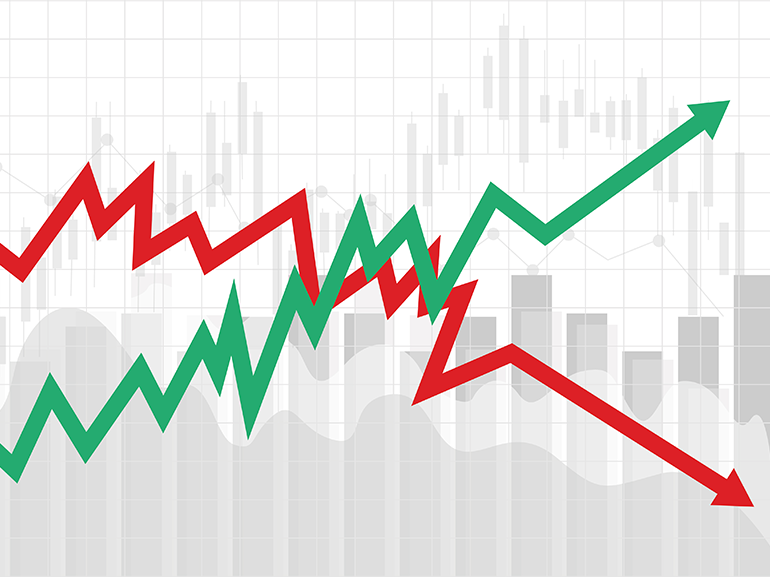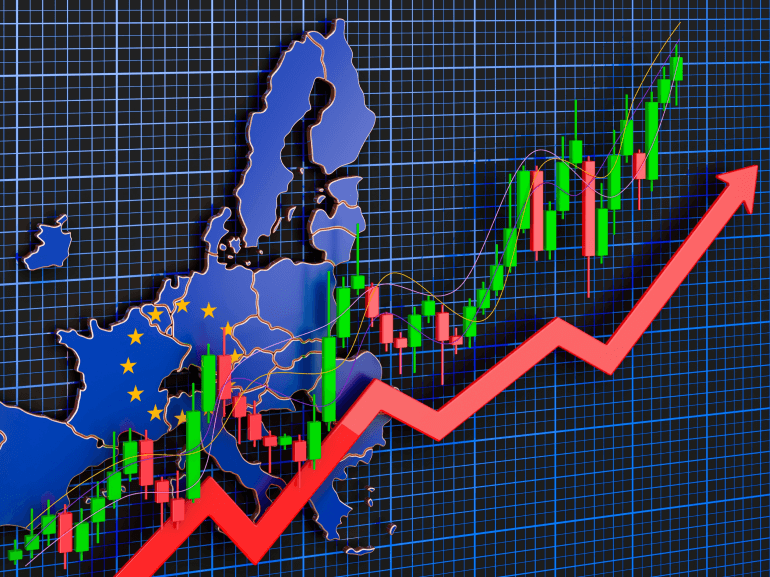U.S. Markets Diverge: Dow’s Losing Streak vs Nasdaq’s ATH
The U.S. stock market was a tale of two stories on Monday, 16 December, as traders awaited the potential FOMC’s interest rate hike tomorrow (Wednesday, 18 December) and Bitcoin (BTCUSD) reached a new cryptocurrency milestone by hitting a new all-time high above the $107,000 mark.
The Dow Jones Industrial Average (USA 30) index fell 0.25% on Monday, and the Nasdaq (NQ) rose 1.24%. While the Nasdaq traded at a new record high, the Dow Jones index trading was down for its longest losing streak since 2018.
Let’s take a closer look at the potential reasons behind this divergence in Wall Street:

What’s Driving the Dow Jones’ Eight-Day Slump?
On Monday, 16 December, the Dow Jones index extended its losing streak to eight consecutive trading sessions, marking its longest decline since 2018. Some of the largest contributors to Monday’s losses included UnitedHealth Group (UNH) (-4.22%), Verizon (VZ) (-3.31%) and Chevron (CVX) (-2.93%).
This bearish movement seems to reflect a kind of traders caution as they await the Federal Reserve’s final hawkish or dovish monetary policy decision of 2024. As this last rate cut is expected to occur just before the Christmas holiday season, some market participants seem to be adopting a wait-and-see approach.
The DJIA index is one of the most recognised U.S. stock indices, measuring the share prices of 30 blue-chip public companies across various sectors listed on the Nasdaq and the NYSE exchanges. While this index is the second-oldest U.S. market index and is often viewed as a barometer of traditional large-cap companies, it has faced challenges in keeping pace with other more traded indices, particularly the Nasdaq, which has benefited from the robust performance of the tech stock sector.
In recent years, the Dow’s composition has been adjusted to reflect the growing influence of industries like big tech, cloud computing, and semiconductors. Still, the rise of artificial intelligence and other innovations, which has reshaped markets, favoured indices that are heavily weighted toward big tech companies.
The history of the Nasdaq, for instance, shows that it has recently performed well mostly thanks to the so-called "Magnificent Seven" tech giants—Apple (AAPL), Microsoft (MSFT), Alphabet (GOOG), Amazon (AMZN), Meta (META), Tesla (TSLA), and Nvidia (NVDA).
On Monday, all of these stocks advanced except for Nvidia stock, helping the Nasdaq outperform the Dow. Gains also came from companies like Broadcom (AVGO), further underscoring the tech strength of the index. By contrast, the Dow Jones index has less exposure to the booming tech sector, which has limited its ability to capitalise on the recent market momentum.
Why Is the Nasdaq Hitting New Record Highs?
The Nasdaq Composite Index surged to a new all-time high on Monday, advancing 1.24% to close at 20,173.89 points. The rally was likely fueled by strong performances from popular semiconductor and technology stocks, including Broadcom stock, Alphabet share, Apple stock, and Tesla shares.
These companies all reached record highs, driving significant momentum within the Nasdaq, and as discussed previously, the Nasdaq’s rise has been largely supported by megacap and growth stocks.
Another potential factor contributing to the Nasdaq’s overall gain could be the performance of stocks benefiting from the recent rise in Bitcoin, such as MicroStrategy (MSTR), Coinbase (COIN) and BlackRock (BLK).
On Monday, the Bitcoin price briefly soared past $107,000, marking a new record high, and likely providing a significant boost to companies with exposure to cryptocurrencies, such as MicroStrategy (MSTR). Due to its major Bitcoin holdings, MicroStrategy’s stock price sharply rose alongside Bitcoin’s rally in 2024. Furthermore, on Monday, 23 December, the company is expected to become a part of the Nasdaq-100 Index.
What Should Traders Expect Now?
As the Fed prepares for its highly anticipated meeting, all eyes are on the central bank’s decisions and forward guidance. As monetary policy plays a pivotal role in shaping the course of the U.S. instruments, traders should particularly focus on whether the Fed will signal how many additional rate cuts to expect in 2025.
Fed officials have recently hinted that the anticipated rate cut this week could mark the conclusion of the first phase of a two-step rate-lowering process: a half-point rate cut in September, which marked the start of the easing monetary policy cycle, and a quarter-point cut last month, signaling a more measured approach to its tightening strategy.
If the Fed cuts rates again this week, it would represent the third consecutive cut. Market expectations are now pricing in a 97.1% chance of a 25 basis point cut tomorrow—a significant shift from the 61.9% chance priced in just one month ago.
While a rate cut seems all but certain, recent Fed communications suggest officials will strike a cautious tone regarding future monetary policy. The focus is likely to be on the so-called "neutral" rate—the interest rate that neither stimulates nor restricts economic growth, and on potential upcoming policy changes under president-elect Donald Trump, as the Fed might need to align its actions to the new administration’s fiscal policy changes or economic priorities. (Source: The Wall Street Journal)
Conclusion
The U.S. stock market was marked by diverging outcomes on Monday, 16 December, highlighting contrasting trends across major indices. While the Dow Jones struggled through its eighth consecutive losing session, reflecting traders vigilance ahead of the Federal Reserve’s monetary policy decision, the Nasdaq surged to a record close, driven by tech and semiconductor stocks alongside Bitcoin’s rally to its all-time high.
The upcoming Fed meeting remains the focal point for traders, as the central bank’s rate decision and forward guidance could significantly influence market sentiment and index price. Therefore, traders should follow significant news and market insights, as well as major events, that can influence the overall market.





